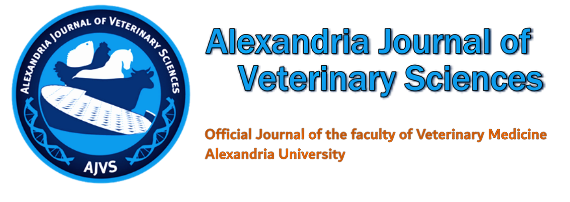
| Original Article | ||||||||||||||||||||||||||||||
AJVS. 2016; 51(2): 118-121 doi: 10.5455/ajvs.206984 ERIC-PCR Genotyping relation of Vibrio Parahaemolyticus Isolated from Infected Oreochromis niloticus and Poultry Manure as Fish Feed Shymaa M. Elkasaby, Helmy A. Turkey, Khalil R.h..
| ||||||||||||||||||||||||||||||
| How to Cite this Article |
| Pubmed Style Elkasaby SM, Turkey HA, R.h. K. ERIC-PCR Genotyping relation of Vibrio Parahaemolyticus Isolated from Infected Oreochromis niloticus and Poultry Manure as Fish Feed. AJVS. 2016; 51(2): 118-121. doi:10.5455/ajvs.206984 Web Style Elkasaby SM, Turkey HA, R.h. K. ERIC-PCR Genotyping relation of Vibrio Parahaemolyticus Isolated from Infected Oreochromis niloticus and Poultry Manure as Fish Feed. https://www.alexjvs.com/?mno=206984 [Access: May 04, 2025]. doi:10.5455/ajvs.206984 AMA (American Medical Association) Style Elkasaby SM, Turkey HA, R.h. K. ERIC-PCR Genotyping relation of Vibrio Parahaemolyticus Isolated from Infected Oreochromis niloticus and Poultry Manure as Fish Feed. AJVS. 2016; 51(2): 118-121. doi:10.5455/ajvs.206984 Vancouver/ICMJE Style Elkasaby SM, Turkey HA, R.h. K. ERIC-PCR Genotyping relation of Vibrio Parahaemolyticus Isolated from Infected Oreochromis niloticus and Poultry Manure as Fish Feed. AJVS. (2016), [cited May 04, 2025]; 51(2): 118-121. doi:10.5455/ajvs.206984 Harvard Style Elkasaby, S. M., Turkey, . H. A. & R.h., . K. (2016) ERIC-PCR Genotyping relation of Vibrio Parahaemolyticus Isolated from Infected Oreochromis niloticus and Poultry Manure as Fish Feed. AJVS, 51 (2), 118-121. doi:10.5455/ajvs.206984 Turabian Style Elkasaby, Shymaa M., Helmy A. Turkey, and Khalil R.h.. 2016. ERIC-PCR Genotyping relation of Vibrio Parahaemolyticus Isolated from Infected Oreochromis niloticus and Poultry Manure as Fish Feed. Alexandria Journal of Veterinary Sciences, 51 (2), 118-121. doi:10.5455/ajvs.206984 Chicago Style Elkasaby, Shymaa M., Helmy A. Turkey, and Khalil R.h.. "ERIC-PCR Genotyping relation of Vibrio Parahaemolyticus Isolated from Infected Oreochromis niloticus and Poultry Manure as Fish Feed." Alexandria Journal of Veterinary Sciences 51 (2016), 118-121. doi:10.5455/ajvs.206984 MLA (The Modern Language Association) Style Elkasaby, Shymaa M., Helmy A. Turkey, and Khalil R.h.. "ERIC-PCR Genotyping relation of Vibrio Parahaemolyticus Isolated from Infected Oreochromis niloticus and Poultry Manure as Fish Feed." Alexandria Journal of Veterinary Sciences 51.2 (2016), 118-121. Print. doi:10.5455/ajvs.206984 APA (American Psychological Association) Style Elkasaby, S. M., Turkey, . H. A. & R.h., . K. (2016) ERIC-PCR Genotyping relation of Vibrio Parahaemolyticus Isolated from Infected Oreochromis niloticus and Poultry Manure as Fish Feed. Alexandria Journal of Veterinary Sciences, 51 (2), 118-121. doi:10.5455/ajvs.206984 |








